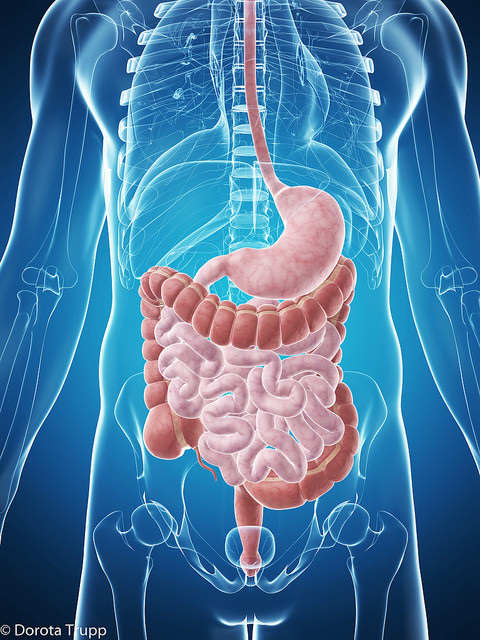Nourishment of the body : The role of gut flora

As everybody knows, the main purpose of the digestive system is to digest and absorb food. Scientific research and clinical experience shows that without healthy gut flora, the digestive system cannot efficiently perform these functions.
A good example is the digestion of milk and wheat proteins, which happens in two stages. The first stage occurs in the stomach where, under the influence of digestive juices produced by the stomach wall, milk and wheat proteins split into peptides, some of which have morphine-like structures called casomorphines and gluteomorphins. This is a normal process and happens in all of us. Then these peptides move to the small intestine where the next stage of their digestion happens. They get subjected to pancreatic juices and then reach the intestinal wall, where they are broken down by enzymes called peptidases on the microvilli of enterocytes. This is the stage which is missing in people with abnormal gut flora because of the poor state of their enterocytes. As a result, casomorphines and gluteomorphines get absorbed into the bloodstream unchanged and cause problems in the body, particularly in reference to brain and immune system function.
Apart from keeping the gut wall in good shape, the healthy flora populating this wall also have been designed to take an active part in the process of digestion and absorption, so much so that the normal digestion and absorption of food is probably impossible without well-balanced gut flora. The flora have the ability to digest proteins, ferment carbohydrates and break down lipids and fibre. By-products of this bacterial activity in the gut are very important in transporting minerals, vitamins, water, gases and many other nutrients through the gut wall and into the bloodstream. If the gut flora are damaged, even the best food and supplements in the world may have a poor chance of being broken down and absorbed!
Apart from providing a physical barrier, the bacteria in our guts work against invasive pathogenic microorganisms by producing antibiotic-like substances, antifungal volatiles and antiviral material. In addition, by creating organic acids, the essential bacteria maintain the pH near the wall of the gut at between 4 and 5. This is an acidic environment that discourages the growth of pathogenic ‘bad’ microbes, which require more alkaline surroundings. Our healthy indigenous bacteria also have the ability to neutralise many harmful chemicals and chelate heavy metals. Furthermore, the cell walls of beneficial bacteria absorb the output of many carcinogenic processes, which are the basis of all cancer formation.
For more information on gut health, and for lessons in cooking foods that promote and protect gut health, check out The lost art of fermentation cooking classes on the Trupp Cooking School website.

